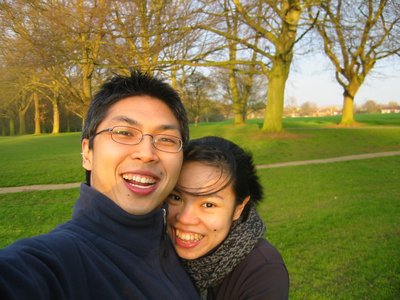The title of this post probably sounds a tad bit patronising. Apologies in advance. (and feel free to click elsewhere on your browser)
However, Mrs Kong finds that perhaps too many, including the present, have forgotten how to boil an egg. Given that very little goes wrong in the process of boiling an egg, perhaps a more apt title to this post is "How to boil the Perfect Egg". All should be done before JW wakes up from his afternoon nap!
At the risk of sounding like Deli@ Smith, here is how it should be done...
How to -
1. Take the egg out of the fridge a while before cooking.
2. Bring the water to boil and turn the heat down to the lowest setting.
3. Lower the egg into the water. Keep the heat at a level below simmering or boiling point. A few rising bubbles is ok.
4. Guidelines on how long the egg should be boiled for: For a runny yolk, 5 mins; For a part runny yolk, 7 mins; For a hard boiled egg (but still moist), 10 - 12 mins. After 12 mins, the egg yolk will start getting dry.
Trouble shooting (when the egg is less than perfect) -
Egg shell cracks as it is submerged into the boiling water
Possible cause - egg is not at room temperature, or the water is too hot/ boiling too vigorously.
An unappetising greenish layer forms around the yokes (where the eggs have been hard boiled)
Possible cause - residual heat has continued cooking the egg after it has been removed from the water. Solution for this is to submerge the egg into cold water after it has been removed from the pot to stop the cooking process.
End Note
Once an egg has been hard boiled, it is also possible to tell of the freshness of the egg, from the position of the egg yolk within the egg white. If the egg yolk appears right smack in the middle of the egg white, we have a fresh one. If you see the egg yolk is visible from the outside of the egg (ie off centre) this is a clear indication that the egg has been sitting around in the fridge or the supermarket, prior to being cooked.
Subscribe to:
Post Comments (Atom)


No comments:
Post a Comment